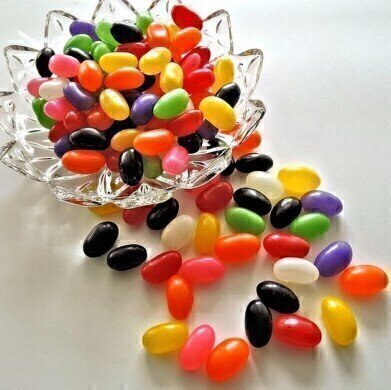Bioanalytical
How Do They Make So Many Jelly Bean Flavours? — Chromatography Investigates
Apr 26 2017
What is your favourite? Cotton Candy or Strawberry Daiquiri? Or perhaps you are a Harry Potter fan and are working your way through Vomit, Earthworm and Dirt. Whatever your choice, you are not alone.
Since Jelly Belly jelly beans (the name was inspired by the 1920s blues singer Leadbelly) were invented in 1976, they have spread around the globe. Over 46,000 kilograms of beans are made every day — working out at 347 beans per second. Amazingly it takes over seven days to make a single bean — with over 58 different flavours to choose from, excluding Dirt and Earthworm. But how do they make so many different flavours?
Flavour — having a nose around
The way that we taste food is down to the mouth, nose and brain working in harmony — and key to taste is the nose. Flavours in food, drink or jelly beans are due to the interaction between chemicals in the substance and receptors in the mouth and nose which send a signal to the brain. The brain then interprets this signal and assigns the flavour — a mixture of taste and smell — to the spectrum of flavours we use: sweet, sour, salty, bitter or umami.
Surprisingly, it is our nose that contributes most of the information our brain processes and interprets flavours as nice or horrible — although the shape and colour of food and where we are eating it is important to our perception too. So how does this help create the weird and wonderful flavours in a jelly bean?
Chromatography maps the flavours
Since smells play such an important role in taste, scientists can analyse real smells to help recreate the flavours needed in jelly beans. The best method to analyse smells is by using gas chromatography (GC). By heating or dissolving a sample, its volatile components are released — the ones we can smell — and they can then be analysed and identified using mass spectrometry and olfactory techniques. Chromatography is basically a method of separating and analysing mixtures and jelly bean flavours or antibodies — as discussed in the article, Improved MAb Separations with 1000 Å Superficially Porous Particles — benefit from chromatographic analysis.
Once the flavour markers are identified, the candy maker’s flavour experts can get to work and synthesize the flavour in the laboratory. Typically, they will start by modifying existing odours and tastes. But jelly bean makers are also making sure that the flavour bursts free onto your tongue.
And the compounds needed to mimic a natural flavour might be totally different from the actual flavour ingredients. A chocolate flavour can be created using substances’ that smell or taste like meat, peaches, beef fat and cooked cabbage. The Vomit flavoured bean arose because the scientists couldn’t manage to make a successful Pizza flavoured bean — the cheese flavour being yukky. Hence, Vomit flavour.
What’s your favourite bean?
Digital Edition
Chromatography Today - Buyers' Guide 2022
October 2023
In This Edition Modern & Practical Applications - Accelerating ADC Development with Mass Spectrometry - Implementing High-Resolution Ion Mobility into Peptide Mapping Workflows Chromatogr...
View all digital editions
Events
Apr 23 2024 Kintex, South Korea
Apr 23 2024 Seoul, South Korea
Apr 28 2024 Montreal, Quebec, Canada
May 05 2024 Seville, Spain
May 15 2024 Birmingham, UK














